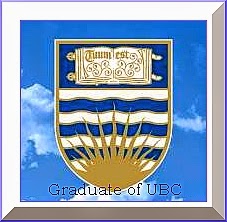Improving Higher Education in India – I
 |
| Ruins of Nalanda International University, first university in the world. |
Higher education here is defined as that education which leads to a university degree such as the bachelor’s degree, master’s degree or doctoral degrees. It is undertaken usually after twelve years of school education that begins at age six.
This article is written with reference to the quality of higher education in India. However what is stated here is equally applicable elsewhere as well. Over the last decade, with the opening of the higher education sector in India to private sector a plethora of educational institutions, both affiliated colleges and universities have emerged in India. They offer courses leading to degrees in various disciplines varying from the humanities to professional areas. However, whereas the quantity of available education has increased drastically, the same cannot be said for the quality. The quality of higher education varies from extremely dismal to good with more of the former. The time has come for focusing on improving the quality of higher education. The steps required to achieve this goal are diverse and many and cannot be covered in a single brief article. However, a few of the most elementary measures required to improve quality that are presently being overlooked may be listed in a few brief paragraphs here. There is a need to make a beginning with these.
ELIMINATING THE THREE D’S OF POOR HIGHER EDUCATION:
1. Double Shifts: A practice has begun in some higher educational institutions to offer degrees in two shifts. It may safely be said that the production of university graduates must not be equated to the production of toiletries and brooms that are frequently produced in factories that work in more than one shift. The practice of offering even primary level education in two shifts results in poor primary level education leave alone higher education level. When the concept of the second shift is extended to professional colleges such as engineering colleges the resulting deterioration is even more severe. The full reasons for this deterioration are not outlined here for the sake of brevity, but these are well known to academics engaged in higher education. There is a need to bar second shift programs through suitable governmental regulation.
2. Dual Degrees: An insidious practice of offering dual degree programs e.g. programs that lead to two degrees after a certain number of years has crept into the higher education sector in India. Such programs limit the choices available to a student and do nothing to enhance quality of education. Rather they lead to a compression of an education program along with compression in quality. Such programs need to be barred through appropriate regulation.
3. Distance Education: Whereas distance education (largely through correspondence) does not lead to the best quality of education in any discipline, it is a disaster if conducted for professional degree programs that require much practical work and personal interaction. Further even in the arts if private parties are permitted to offer distance education programs it may lead to (often does) increasing the number of students to enormous levels merely for profit accompanied with enormous dilutions of quality. It is recommended that distance education be permitted on a very limited scale under the following conditions: Distance education may be provided only by government bodies i.e. they should be funded by the state and be controlled by the state. Not more than three such institutions called open universities be permitted as funded by the national government and not more than one such if funded by the state or provincial governments in order to limit this type of education. Private universities must not be permitted to offer distance education programs that lead to a degree. Distance education of any duration may however be offered by any party as certificate programs even by a housewife in say knitting if she can find students. Citizens must be permitted to share their knowledge if there are takers for that knowledge but such programs need to be clearly distinguished from the more rigorous degree programs within a country. The certificate programs may be labeled as certificate of learning, certificate of advanced learning and so on.
Eliminating the three D’s or Devils of higher education thorough legislation or regulation is the first step towards improving the quality of higher education in India and elsewhere. This author, who has spent most of his career in higher education both at the national and International level, hopes to write more such brief articles in the near future containing suggestions for improving higher education.
NOTE: This is a seven part note, Click for newer posts to reach the next installments
UPDATE Nov 2017
A few days ago the Supreme Court of India retrospectively cancelled the distance education engineering degrees of thousands of engineers in India throwing their lives into disarray and ruin. This note warning against distance education has been online since 2011. Seems it was not heeded nor the following notes raising urgent matters on higher education in India even though links were repeatedly sent to policy makers.
Author: Dr. Ashok Malhotra, PhD, UBC Canada; B.Tech, M. Tech., IIT Delhi
.jpg)


Comments
About the word, Devil, I wouldn't use it in this sacred high minded paper. What do you think?